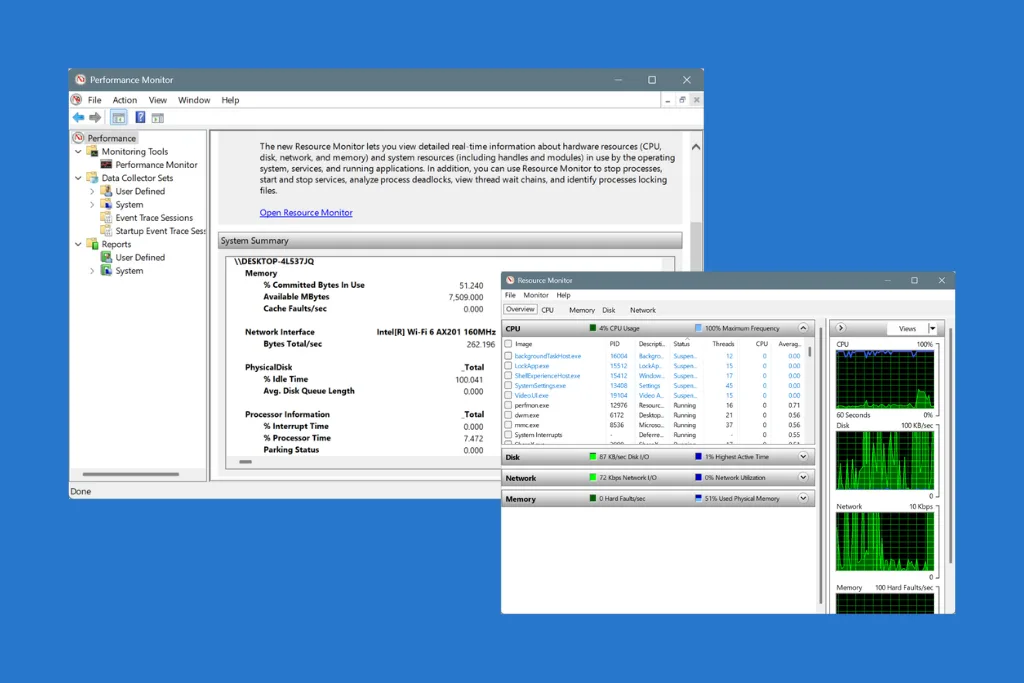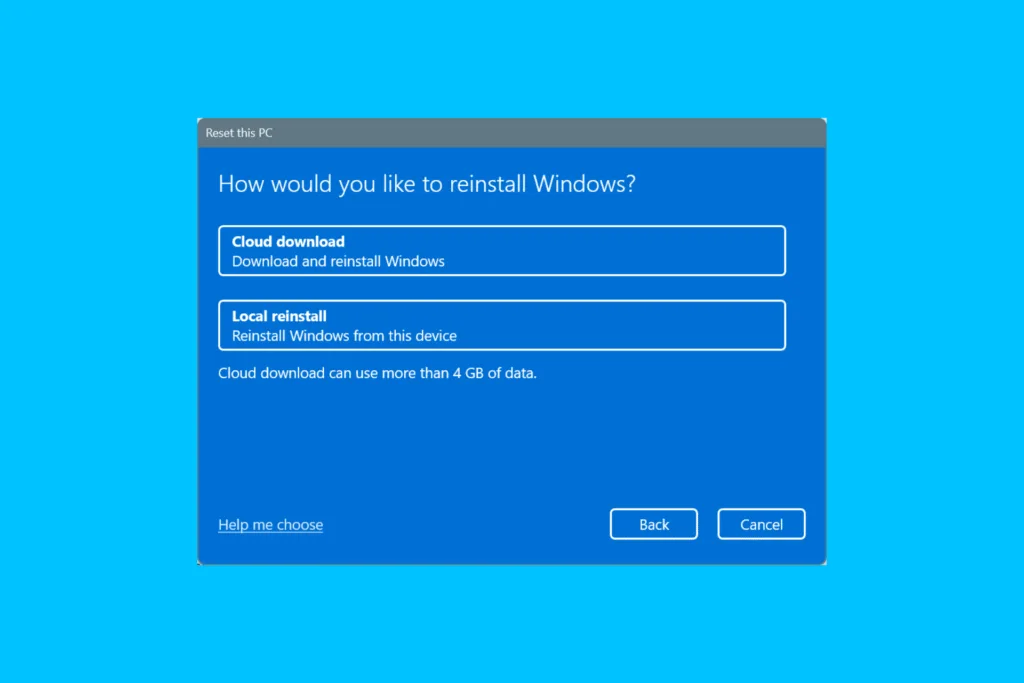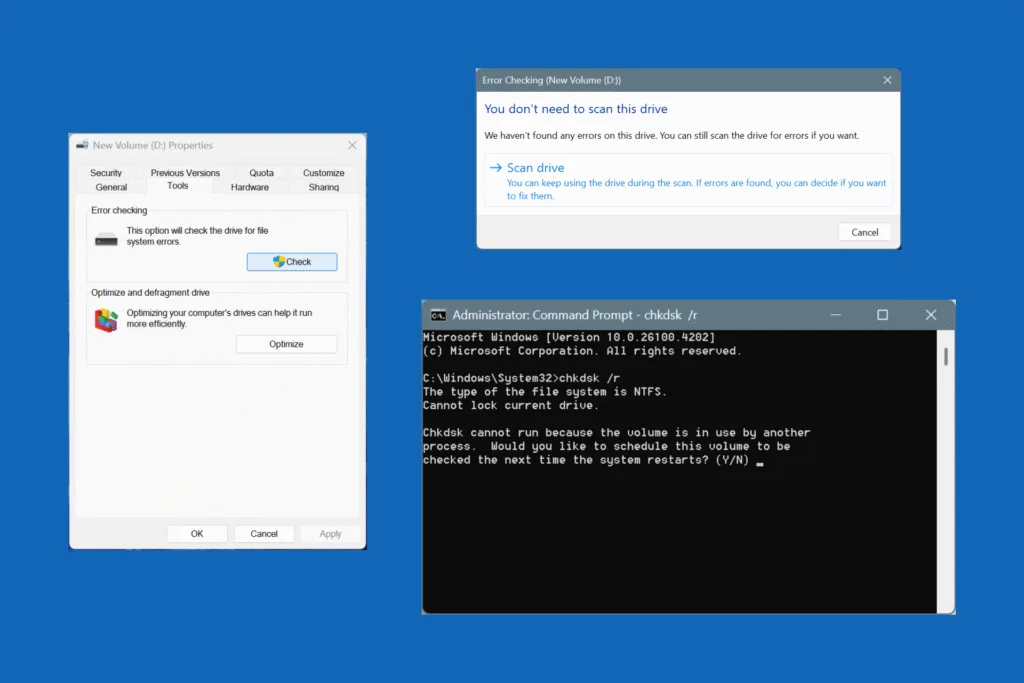Windows offers two dedicated built-in tools to analyse and track the system, the Resource Monitor and Performance Monitor, and each has a specific purpose. But unless you know the differences between Resource Monitor and Performance Monitor, you can never fully utilize either.
Let’s find that out, and by the end of this guide, you will be able to effectively monitor the PC’s performance and resource consumption, as well as identify bottlenecks to the performance!
What is the difference between Resource Monitor and Performance Monitor?
| Resource Monitor | Performance Monitor | |
| Definition | Provides real-time data on CPU, memory, disk, and network usage. | Tracks system performance over time using customizable counters. |
| Use Case | Real-time monitoring and troubleshooting of system resource consumption. Similar to Task Manager, but it offers a detailed overview of resource consumption. | For analyzing system performance and diagnostics. It’s used to log data, create reports, set alerts, and can even monitor remote PCs. |
| Ease of Use | Extremely easy to use. You can switch between the CPU, Memory, Disk, or Network tabs for a detailed view, or quickly check how apps are consuming resources via the Overview tab. | Not too straightforward, requires a deep understanding of the hardware and software side of things. |
| Advantages | 1. Easy to use. 2. Real-time statistics. 3. Instantly highlights apps hogging resources. | 1. Best for long-term performance monitoring. 2. Offers deep-level insights. 3. Provides advanced customizations for counters. |
| Drawbacks | 1. Limited customizations. 2. No long-term performance-related data storage. | 1. Slightly complex interface for regular users. 2. Can’t be used for real-time troubleshooting. |
| How to Open | Search for Resource Monitor, or use resmon.exe in the Run command. | Search for Performance Monitor, or use perfmon.exe in the Run command. |
Which is better, Resource Monitor or Performance Monitor?
As you can see, both Resource Monitor and Performance Monitor serve a very different purpose. While the former provides real-time data, the latter is used to analyze metrics over time.
The Performance Monitor can also identify performance bottlenecks. All you have to do is generate reports over a period and verify the resource consumption at each stage. If, for instance, at a point, you find the memory and page file usage high, it indicates low available RAM or that a task’s memory consumption has suddenly reported a spike. You can then find out the program responsible for this and take corrective measures!
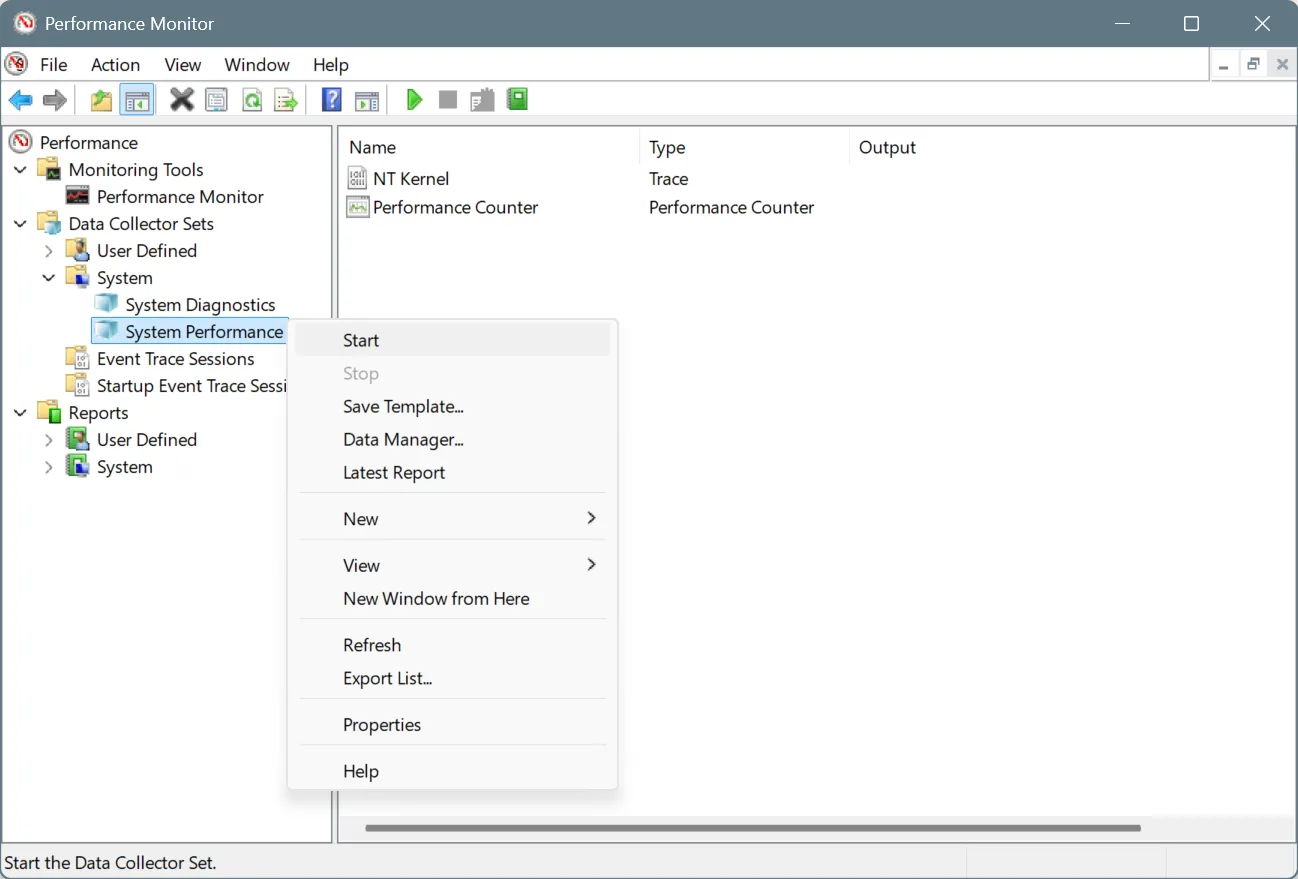
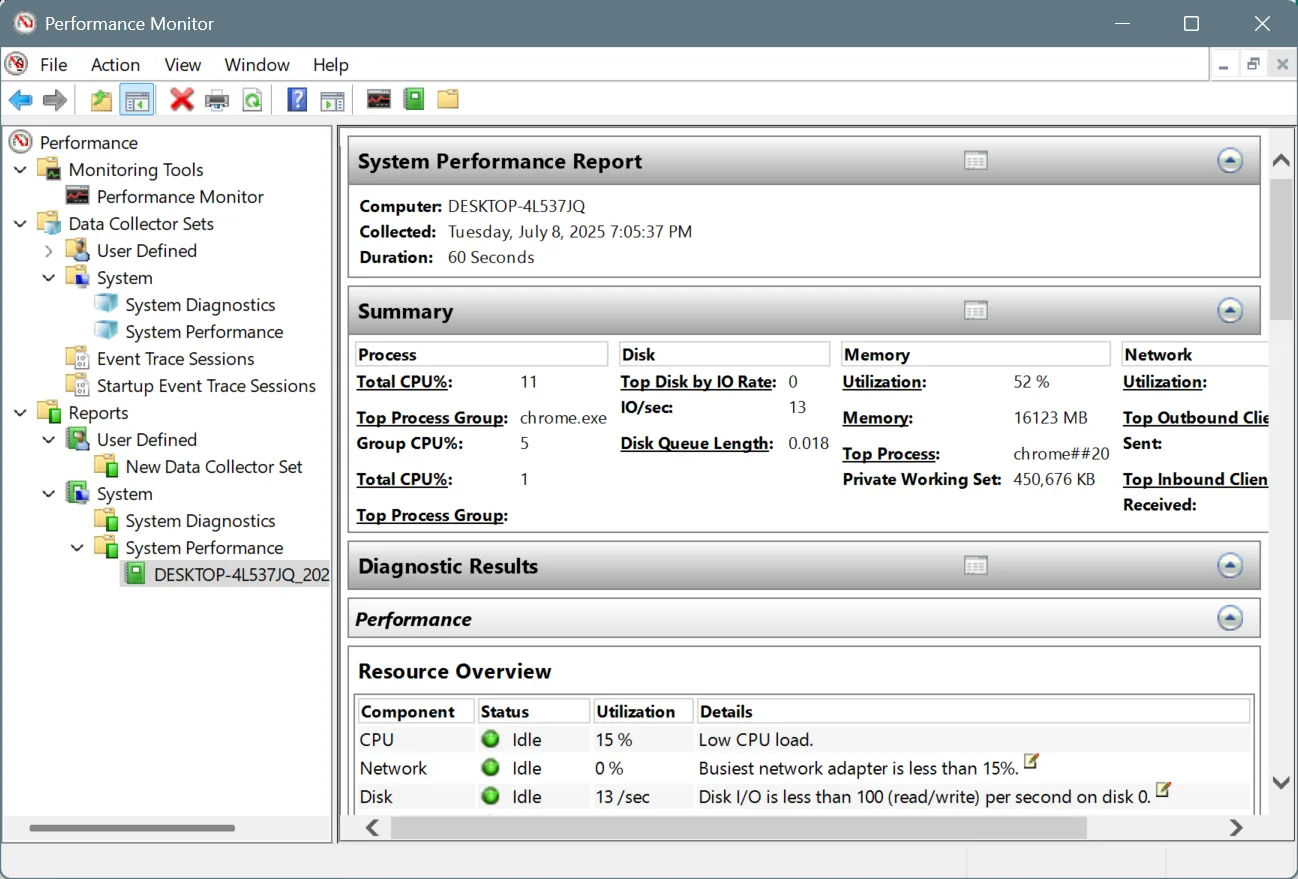
As for the Resource Monitor, it does this all in real time. Simply run the built-in utility and verify the amount of CPU, Network, Disk, and Memory resources consumed by each active process.
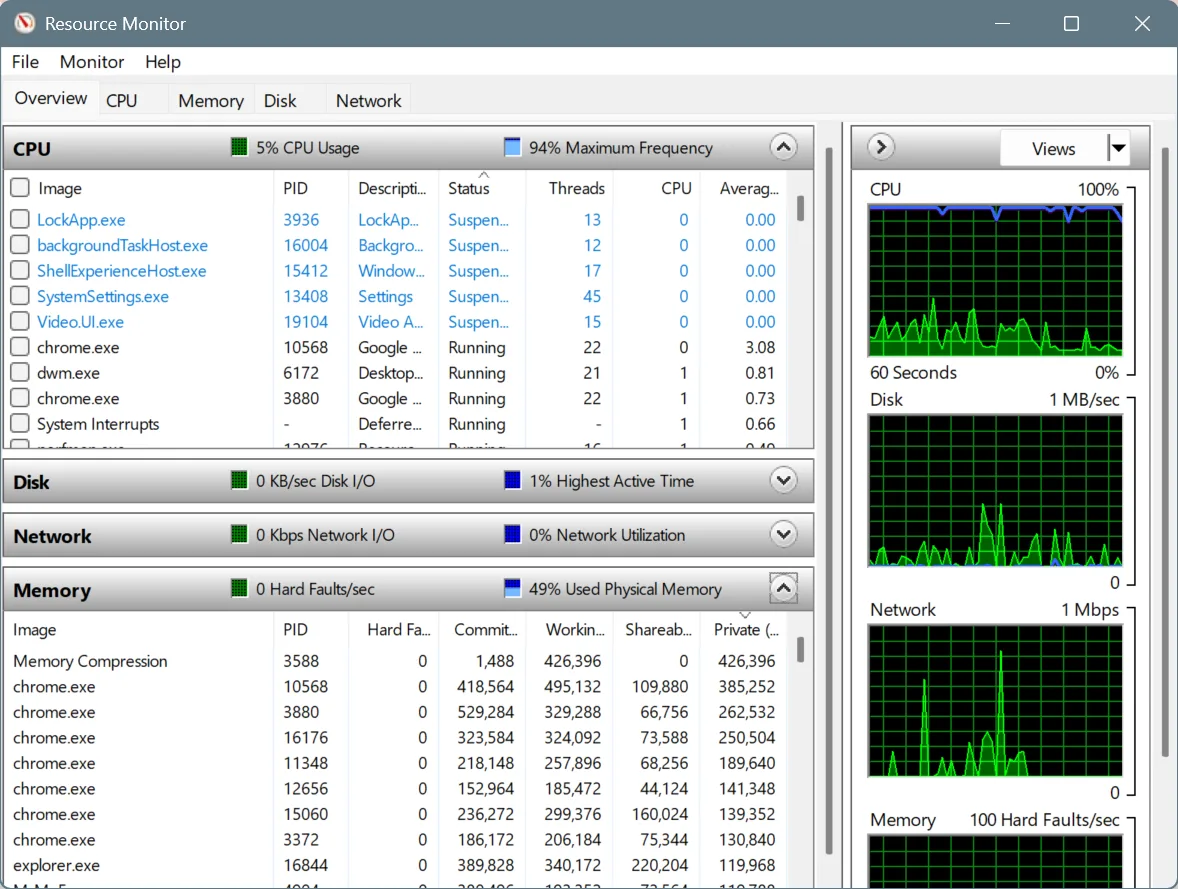
Which should I use, Resource Monitor or Performance Monitor?
If you are a regular Windows user and don’t want to get into the intricacies of the system, use the Resource Monitor. Although it’s not as intuitive as the Task Manager, it provides a more comprehensive real-time analysis of the system-wide resource consumption.
IT administrators or users with the technical know-how can rely on the Performance Monitor to run System Performance or System Diagnostic tests. Again, if you are not too comfortable with it, use the Resource Monitor or Task Manager. In the last 10 years, I haven’t had to use Performance Monitor even once!
That’s our detailed comparison of Resource Monitor vs Performance Monitor, which also highlights how to best use the two built-in utilities for analysis and troubleshooting!
Before you leave, discover the differences between Event Viewer and Reliability Monitor, two other excellent built-in tools for troubleshooting errors in Windows.
For any queries or to share your experience using the Resource Monitor and Performance Monitor, drop a comment below.

With over five years of experience in the tech industry, Kazim excels at simplifying complex topics, making them accessible to tech enthusiasts and general readers alike. He has contributed to several renowned publications worldwide, including WindowsReport and Allthings.how, bringing insightful coverage of key developments in the field.
Kazim has extensively covered the Windows ecosystem, from the early days of Windows 7 to Windows 11. Unlike many in the field, he’s optimistic about Windows 11, calling it the most user-oriented iteration to date.
When he’s not writing, you’ll find Kazim planning weekend getaways or diving into tech verticals beyond his expertise.

